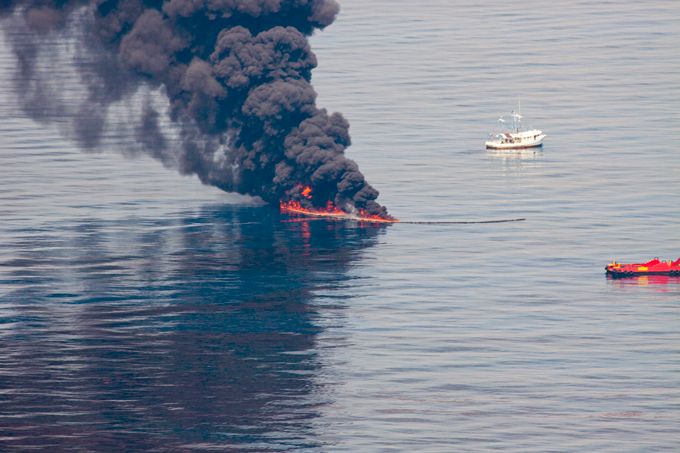For Immediate Release
March 10, 2011
CHRYSENE FOUND IN FLORIDA WATERS
DETECTED BY OPFLEX POM POMS & SWEEPS
Braintree, Massachussets-based Geo Labs has confirmed the presence of Chrysene in the waters in and around Perdido Key, Florida. This substance was detected and absorbed by OPFLEX POM POMS and SWEEPS (OPFLEX is listed on the EPA's National Contingency Plan) submerged near the beach just outside of Eden Condominiums on February 18th, 2011.
Geo Labs CEO, Dave Kahler stated, “We have now built a database of samples from Venice, LA to Pensacola, Florida utilizing EPA testing protocols. This is the first time we have detected Chrysene, which is most concerning as it is showing up in the water close to the beaches
in Perdido Key, Florida.”
"The Clean Water Act (CWA) establishes the basic structure for regulating discharges of pollutants into the waters of the United States and
regulating quality standards for surface waters. The basis of the CWA was enacted in 1948 and was called the Federal Water Pollution
Control Act, but the Act was significantly reorganized and expanded in 1972. 'Clean Water Act' became the Act's common name with
amendments in 1977. Under the CWA, the EPA has implemented pollution control programs such as setting wastewater standards for
industry. We have also set water quality standards for all contaminants in surface waters."
Above is a picture of the OPFLEX with the absorbed oil contaminants that were analyzed by Geo Labs. On February 18th ABC - WEAR TV
Pensacola filmed OPFLEX CEO, Scott Smith deploying the very POM POMs and SWEEPS that detected the Chrysene and subsequently
interviewed Smith after deployment.
I took the following photos myself of the BP Slick fires at sea where thousands of barrels of crude oil were burned. JLW

| Chrysene |
|
Chrysene is one of the polycyclic aromatic hydrocarbon (PAH) compounds. Because it is formed when gasoline, garbage, or any animal or plant material burns, it is usually found in smoke and soot. This chemical combines with dust particles in the air and is carried into water and soil and onto crops. Chrysene is found in the coal tar pitch that industry uses to join electrical parts. It is also found in creosote, a chemical used to preserve wood.
Exposure Pathways
People may be exposed to chrysene from environmental sources such as air, water, and soil and from cigarette smoke and cooked food. Workers who handle or are involved in the manufacture of PAH-containing materials may also be exposed to chrysene. Typically, exposure for workers and the general population is not to chrysene along but to a mixture of similar chemicals.
The general population may be exposed to dust, soil, and other particles that contain chrysene. The largest sources of chrysene in the air are open burning and home heating with wood and coal. Factories that produce coal tar also contribute small amounts of chrysene to the air. People may come in contact with chrysene from soil on or near hazardous waste sites, such as former gas-manufacturing sites or abandoned wood-treatment plants that used creosote. The soil near areas where coal, wood, or other products have been burned is another source of exposure. Exposure to chrysene and other PAHs may also occur through skin contact with products that contain PAHs such as creosote-treated wood, asphalt roads, or coal tar.
People may be exposed to chrysene by drinking water from the drinking water supplies in the U.S. that have been found to contain low levels of the chemical. Foods grown in contaminated soil or air may contain chrysene. Cooking food at high temperatures, as occurs during charcoal grilling or charring, can increase the amount of chrysene in the food. Chrysene has been found in cereals, vegetables, fruits, meats, beverages, and in cigarette smoke.
The greatest exposure to chrysene is likely to take place in the workplace. People who work in coal tar production plants; coking plants; asphalt production plants; coal-gasification sites; smoke houses; municipal trash incinerators; and facilities that burn wood, coal, or oil may be exposed to chrysene in the workplace air. Chrysene may also be found in areas where high-temperature food fryers and broilers are used.
The most common way chrysene enters the body is through the lungs when a person breathes in air or smoke containing it. It also enters the body through the digestive system when substances containing it are swallowed. Although chrysene does not normally enter the body through the skin, small amounts could enter if contact occurs with soil that contains high levels of chrysene (for example, near a hazardous waste site) or if contact is made with heavy oils containing chrysene.
Health Effects
Chrysene causes cancer in laboratory animals when applied to their skin. This finding suggests that it is likely that people exposed in the same manner could also develop cancer. Because studies of chrysene are not complete, we don't know if chrysene that is breathed in or swallowed could cause cancer or if it can cause harmful effects other than cancer.
Information excerpted from
Toxicological Profile for Chrysene March 1990
Agency for Toxic Substances and Disease Registry
United States Public Health Service
|
|
|
| |
|
|
|


This guy just doesn't give up does he lol Him and his Opflex
ReplyDelete